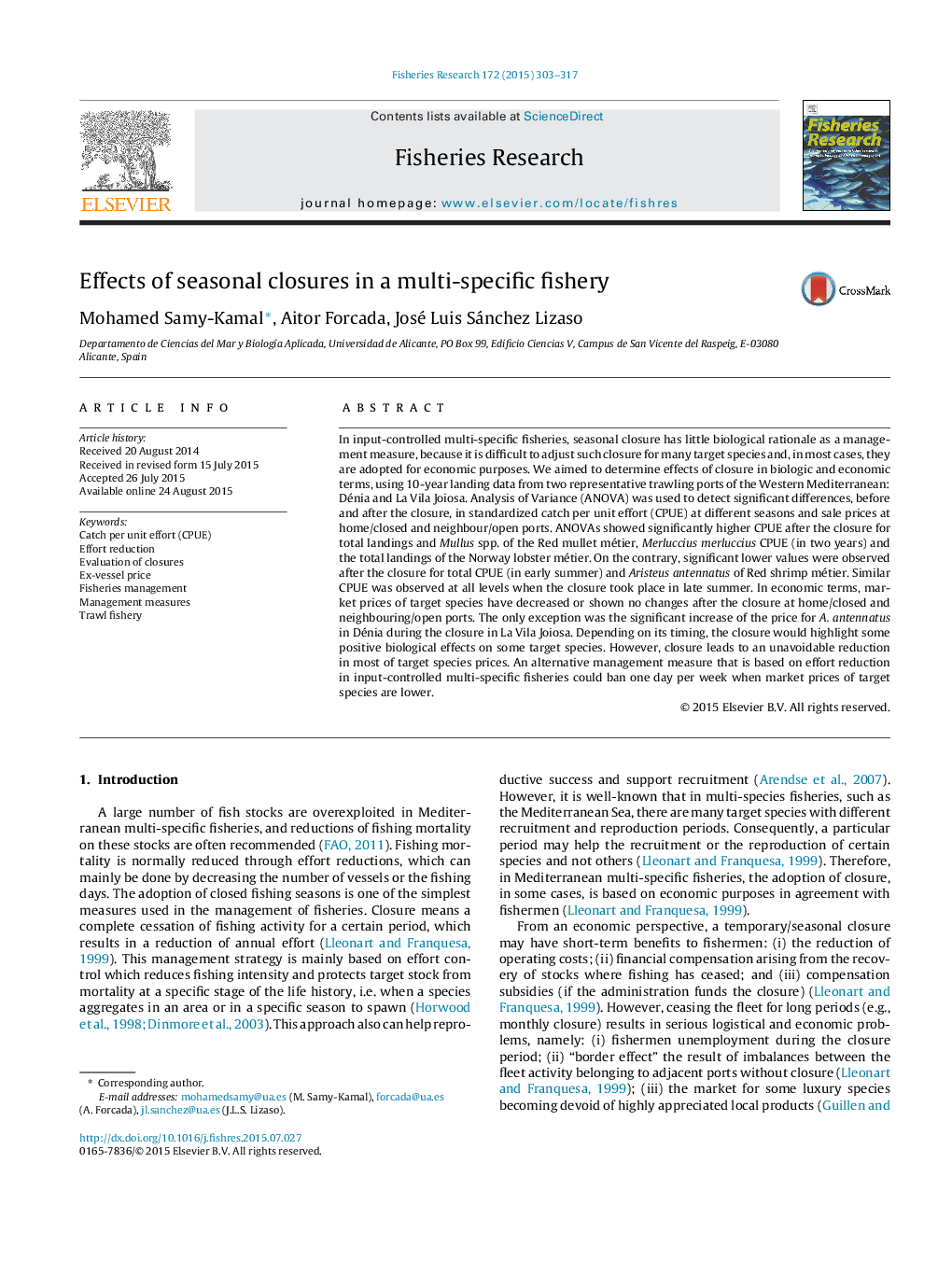| Article ID | Journal | Published Year | Pages | File Type |
|---|---|---|---|---|
| 6385454 | Fisheries Research | 2015 | 15 Pages |
Abstract
In input-controlled multi-specific fisheries, seasonal closure has little biological rationale as a management measure, because it is difficult to adjust such closure for many target species and, in most cases, they are adopted for economic purposes. We aimed to determine effects of closure in biologic and economic terms, using 10-year landing data from two representative trawling ports of the Western Mediterranean: Dénia and La Vila Joiosa. Analysis of Variance (ANOVA) was used to detect significant differences, before and after the closure, in standardized catch per unit effort (CPUE) at different seasons and sale prices at home/closed and neighbour/open ports. ANOVAs showed significantly higher CPUE after the closure for total landings and Mullus spp. of the Red mullet métier, Merluccius merluccius CPUE (in two years) and the total landings of the Norway lobster métier. On the contrary, significant lower values were observed after the closure for total CPUE (in early summer) and Aristeus antennatus of Red shrimp métier. Similar CPUE was observed at all levels when the closure took place in late summer. In economic terms, market prices of target species have decreased or shown no changes after the closure at home/closed and neighbouring/open ports. The only exception was the significant increase of the price for A. antennatus in Dénia during the closure in La Vila Joiosa. Depending on its timing, the closure would highlight some positive biological effects on some target species. However, closure leads to an unavoidable reduction in most of target species prices. An alternative management measure that is based on effort reduction in input-controlled multi-specific fisheries could ban one day per week when market prices of target species are lower.
Keywords
Related Topics
Life Sciences
Agricultural and Biological Sciences
Aquatic Science
Authors
Mohamed Samy-Kamal, Aitor Forcada, José Luis Sánchez Lizaso,
